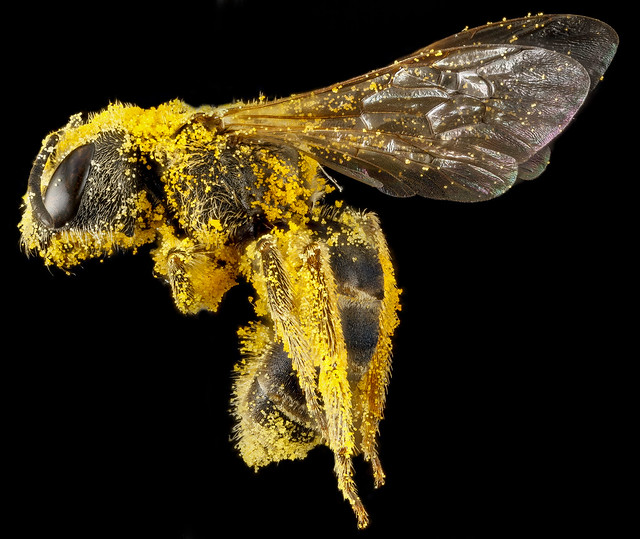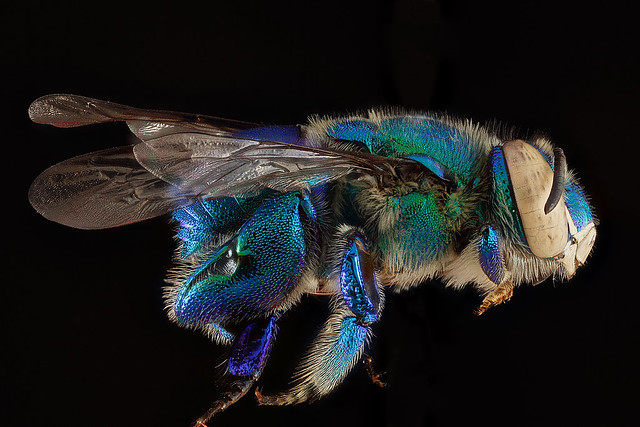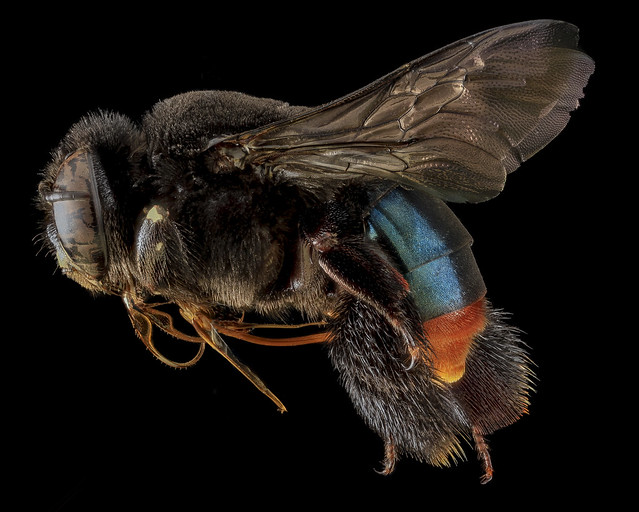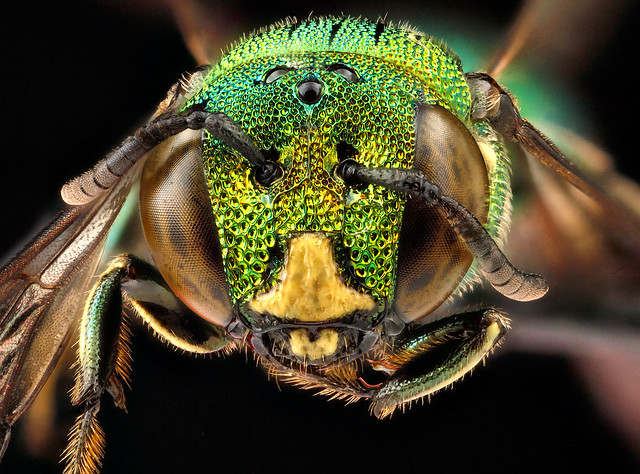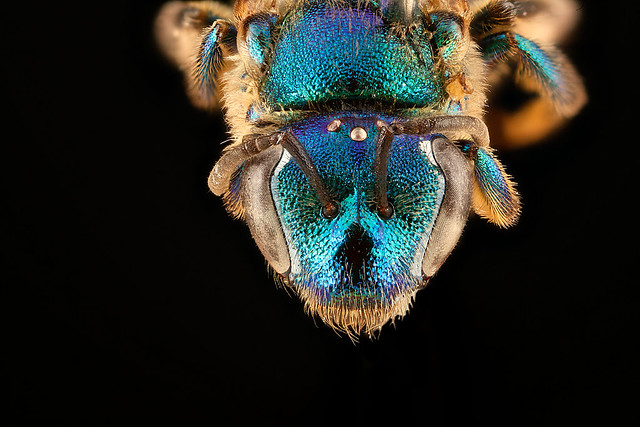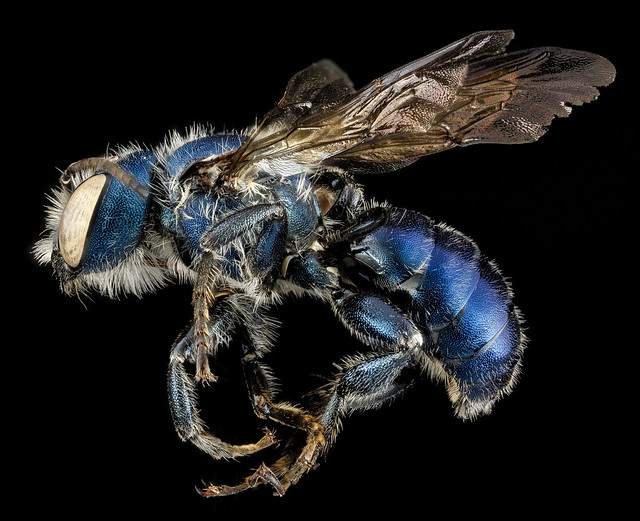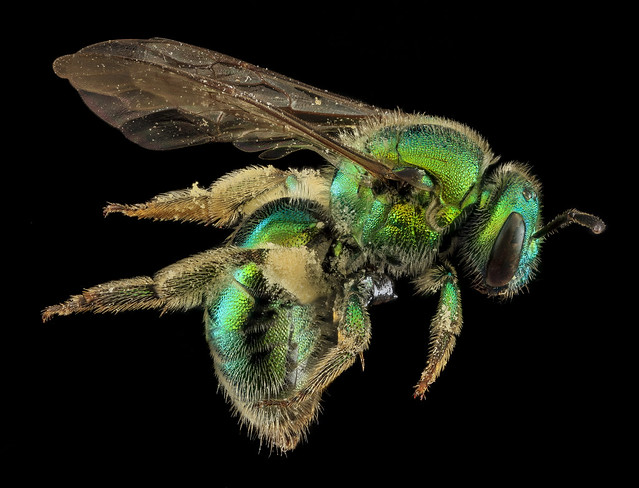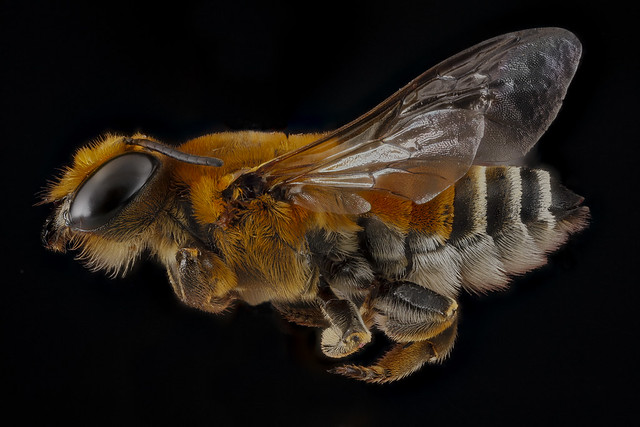Most of us freak out at the mere sight of a bug — let alone a photo! But there’s something about biologist Sam Droege’s pictures of insects that has hundreds of thousands of people marveling at them. Sam’s photostream offers viewers a detailed and rare look at bees; comparing these little, hairy creatures to mesmerizing works of art.
Sam Droege is the head of the U.S. Geological Survey’s Bee Inventory and Monitoring Laboratory in Maryland and for the past seven years he’s been photographing bees and other insects. The purpose is to create online reference catalogs to help researchers identify the thousands of bee species across North America.
“We have to take a lot of pictures because many of these species vary only by very subtle characteristics,” Sam explains. “For some it might be the tiny pits on the surface of the top of the bee, and others it might be the pits within the pits. It’s important to take as many pictures as possible allowing our specialists to look at anything they might be interested in.”
For years, Sam and his team took pictures using simple point-and-shoot cameras. The level of detail, however, was extremely limiting.
“We were taking pictures of bees through microscopes,” Sam says. “We literally attached cameras to microscopes, often with plumbing fixtures. But in the end, we were disappointed with the number of pixels and the amount of resolution of the photos. After a while, we largely stopped pictures through microscopes because the quality wasn’t up to our standards.”
But all that changed in 2010 when Sam’s team was approached by the U.S. Army. They had developed techniques using macro photography to take photos of insect infestations from foreign bases (Iraq, Afghanistan, etc.). Macro photography allowed the army to get high-quality pictures that, in turn, helped them to identify these insects and treat those affected. When Sam first saw these photos, the level of detail blew his mind.
“The army’s novelty here was the portraiture,” Sam admits. “It was the solid, black background, the off-centeredness, the flash, just everything helped provide a portrait of a bee, rather than a documentation of a bee.”
It was from that point onwards, Sam and his team adopted and modified this technique and resumed photographing their specimens.
To capture the bees with such detail, Sam and his team take several different shots of the (already dead) insect and combine them together to form one image using a special software. This software creates detailed macro images which can be blown up to five feet by eight feet without pixelating.
“When we started looking at these pictures, I just wanted to gaze at these shots for long periods of time,” Sam says. “I had seen these insects for many years, but the level of detail was incredible. The fact that everything was focused, the beauty and the arrangement of the insects themselves — the ratios of the eyes, the golden means, the french curves of the body, and the colors that would slide very naturally from one shade to another were just beautiful! It was the kind of thing that we could not achieve at the highest level of art.”
Sam began to show these pictures to several colleagues who also found them visually appealing. They encouraged him to share the photos on Flickr, as a means to transfer these images to other scientists and researchers.
“At some point we found out that someone had posted the Flickr pictures onto Reddit, and it got a huge number of views,” Sam says. “I think it was 200,000 views in two days. I couldn’t believe it! It was at that point we realized that there is interest in these kinds of pictures outside of our scientific circles, and that people just like looking at them.”
Sam says he’s always tried to attract people to what he does but admits it’s been difficult because many us have a preconceived notion that bugs are bad or gross. With these pictures, all of a sudden people were attracted to these insects because of their beauty. People described the bees as “fluffy” with “stained-glass wings.” It’s an entirely new way of reaching people Sam never thought was possible.
“I feel honored as a public servant to bring these pictures to people,” Sam admits. “They’re all public for anyone to see. And the fact that it’s not just important scientifically, but also beautiful… it makes me feel good. It reaches my soft side of my hard-scientist body. And I smile every day when I look at the number of views we’re getting on Flickr.”
Visit Sam’s photostream to see more of his photography.
Previous episode: Beautiful worlds hidden in tiny drops
 Do you want to be featured on The Weekly Flickr? We are looking for your photos that amaze, excite, delight and inspire. Share them with us in the The Weekly Flickr Group, or tweet us at @TheWeeklyFlickr.
Do you want to be featured on The Weekly Flickr? We are looking for your photos that amaze, excite, delight and inspire. Share them with us in the The Weekly Flickr Group, or tweet us at @TheWeeklyFlickr.
